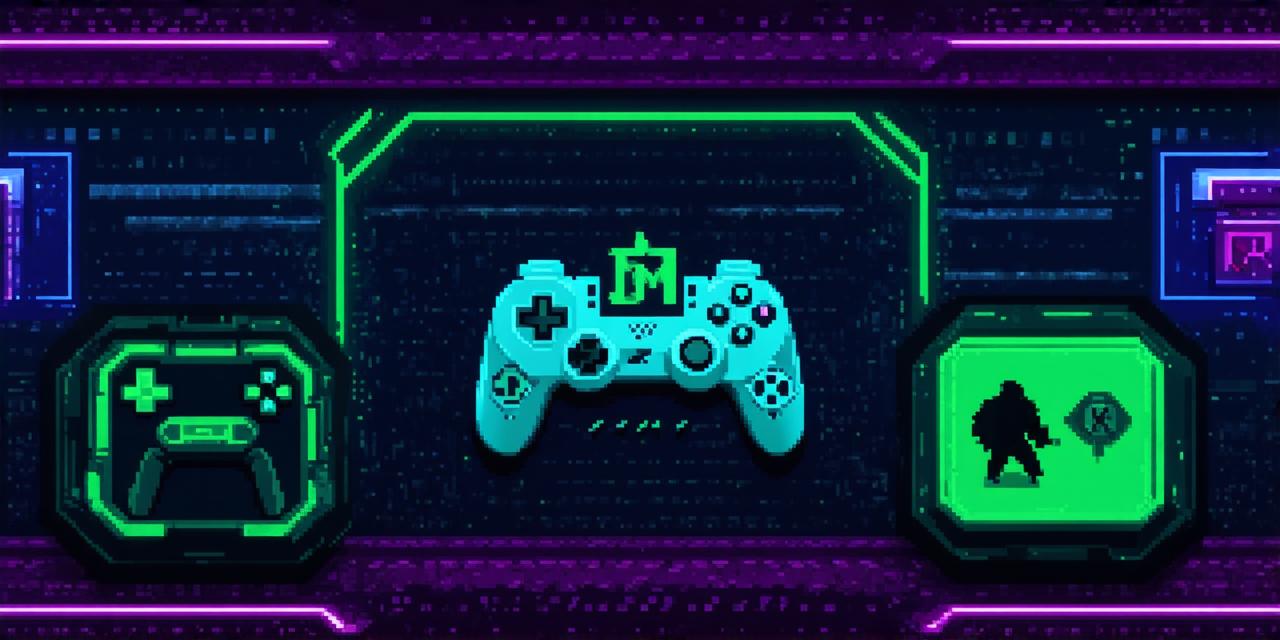Introduction
In today’s digital age, video games have become a multi-billion dollar industry that attracts millions of people worldwide. With so many games available, it can be difficult to keep track of who created which one. However, attributing the creation of a video game to its rightful creator is important for several reasons.
The Importance of Attribution in Video Games
Attributing the creation of a video game to its rightful creator is important for several reasons. First, it helps to give credit where credit is due. In the world of video games, there are often many people who contribute to the development of a game, including programmers, artists, writers, and producers. By attributing the creation of a game to its rightful creator, we can ensure that everyone involved in its development receives the recognition they deserve.
Second, proper attribution can help to prevent plagiarism and intellectual property theft. In the world of video games, it is not uncommon for one developer to copy elements from another’s work without giving them proper credit. This can lead to legal action and damage the reputation of both parties involved. By properly attributing the creation of a game, we can help to protect the rights of its creators and prevent plagiarism and intellectual property theft.
Third, proper attribution can also help to promote transparency and accountability in the video game industry. When a developer is given credit for their work, they are more likely to be held accountable for any mistakes or issues that arise during the development process. This can lead to better quality games and a more trustworthy industry as a whole.
Case Studies: Examples of Proper Attribution in Video Games
1. The Creation of “Mario Bros.”
One of the most well-known examples of proper attribution in video games is the creation of “Mario Bros.” by Nintendo. When the game was first released in 1985, it quickly became a cultural phenomenon and has since sold millions of copies worldwide. However, many people may not know that “Mario Bros.” was actually created by several different people at Nintendo.
The game’s primary creator was Shigeru Miyamoto, who designed the game’s characters, levels, and gameplay mechanics. However, the game also involved the contributions of other designers, including Takashi Tezuka, who helped to develop the game’s story and world, and Koji Yamamura, who created the game’s graphics and animation.
2. The Creation of “The Legend of Zelda: Ocarina of Time”
Another example of proper attribution in video games is the creation of “The Legend of Zelda: Ocarina of Time” by Nintendo. This game, which was released in 1998, is widely regarded as one of the greatest video games of all time and has sold millions of copies worldwide.
Like “Mario Bros.”, “The Legend of Zelda: Ocarina of Time” involved the contributions of many different people at Nintendo. The game’s primary creator was Shigeru Miyamoto, who designed the game’s world, characters, and gameplay mechanics. However, the game also involved the contributions of other designers, including Eiji Aonuma, who helped to develop the game’s story and world, and Takashi Tezuka, who created the game’s graphics and animation.
3. The Creation of “Portal”
A more recent example of proper attribution in video games is the creation of “Portal” by Valve Corporation. This game, which was released in 2007, quickly became a cult classic and has since won numerous awards for its innovative gameplay and storytelling.

“Portal” was created by several different people at Valve, including lead designer Erik Wolpaw and writer Chet Falkenberg. The game’s unique gameplay mechanics, which involved players using portals to solve puzzles and navigate levels, were the result of the combined efforts of these designers.
The Impact of Attribution on Game Development Teams
As we have seen from the examples above, proper attribution can have a significant impact on game development teams. When team members are given credit for their work, they are more likely to feel valued and motivated to contribute their best efforts to future projects. This can lead to better quality games and a more collaborative and productive team dynamic.
Additionally, proper attribution can also help to prevent disputes and conflicts within game development teams. When team members are given credit for their work, they are less likely to feel that their contributions have been overlooked or undervalued. This can lead to fewer disagreements and a more positive team dynamic overall.
Conclusion
In conclusion, attributing the creation of a video game to its rightful creator is important for several reasons. It helps to give credit where credit is due, prevents plagiarism and intellectual property theft, promotes transparency and accountability in the video game industry, and can have a positive impact on game development teams. By properly attributing the creation of video games, we can ensure that everyone involved in their development receives the recognition they deserve and contribute to a more positive and productive industry as a whole.
